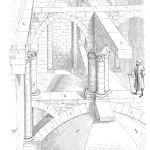
Do you have a reliability department, a maintenance department, or a repair department?
Do you avoid failures? Do you avoid or mitigate their consequences?
Or do you wait for things to go wrong, then fix them?
Repairs are all about fixing what has broken. When something breaks you lose whatever functionality it had. It more than likely broke when you were using it too. So you also lost the benefit of that functionality – often production or service delivery capability. The costs include repair, whatever secondary physical damage occurred, the loss of revenues and profits, plus safety and environmental consequences that arise. When something breaks its “useful life” is reduced – deterioration was allowed to accelerate, so even once repaired, the asset has lost some future useful life. The fix for that longer-term deterioration impact is a capital replacement – earlier than need be. If the breakdown was really bad, then it might be much sooner.
Maintenance is an activity that executes a proactive program to avoid or at least minimize all of that. By doing maintenance you prolong asset life, reduce incidents of failure, reduce the risks to safety, environment, and productive capacity that arise when failures occur.
In some cases, where we can tolerate (live with) the failures and their consequences, then it’s perfectly fine to allow those assets to run to failure. Doing that actually maximizes the realized useful life of those assets.
The trick is to identify what to do proactively, and what to allow to run to failure and to know that those decisions are indeed the best ones based on risk, cost, and revenue earning criteria.

So why the choice of graphics?
Efficiency is about how well you execute your maintenance program. Get it right and you minimize execution costs. It compares to consistency.
Effectiveness is about having the right program to execute. It’s like being accurate.
For best results (i.e.: lowest costs and highest output capacity) you want efficiency AND effectiveness. You want your maintenance program to be well-defined and accurate, and you want it executed consistently. Find out where yours is today!
The goal is to hit the target in the center all the time.
If you are not doing that, then perhaps we should talk.
 Ask a question or send along a comment.
Please login to view and use the contact form.
Ask a question or send along a comment.
Please login to view and use the contact form.
I read the title: “Do you have a Reliability Department” and reading the article I expect to find some words/opinion/advice or comments on the subject.
What I find instead is a link to a site for “M&R Maturity Assessment” for $350.00 and a “Free Initial Executive Consultation”.
I think that this article should be under RESOURCES or under a new tab… CONSULTANCY.